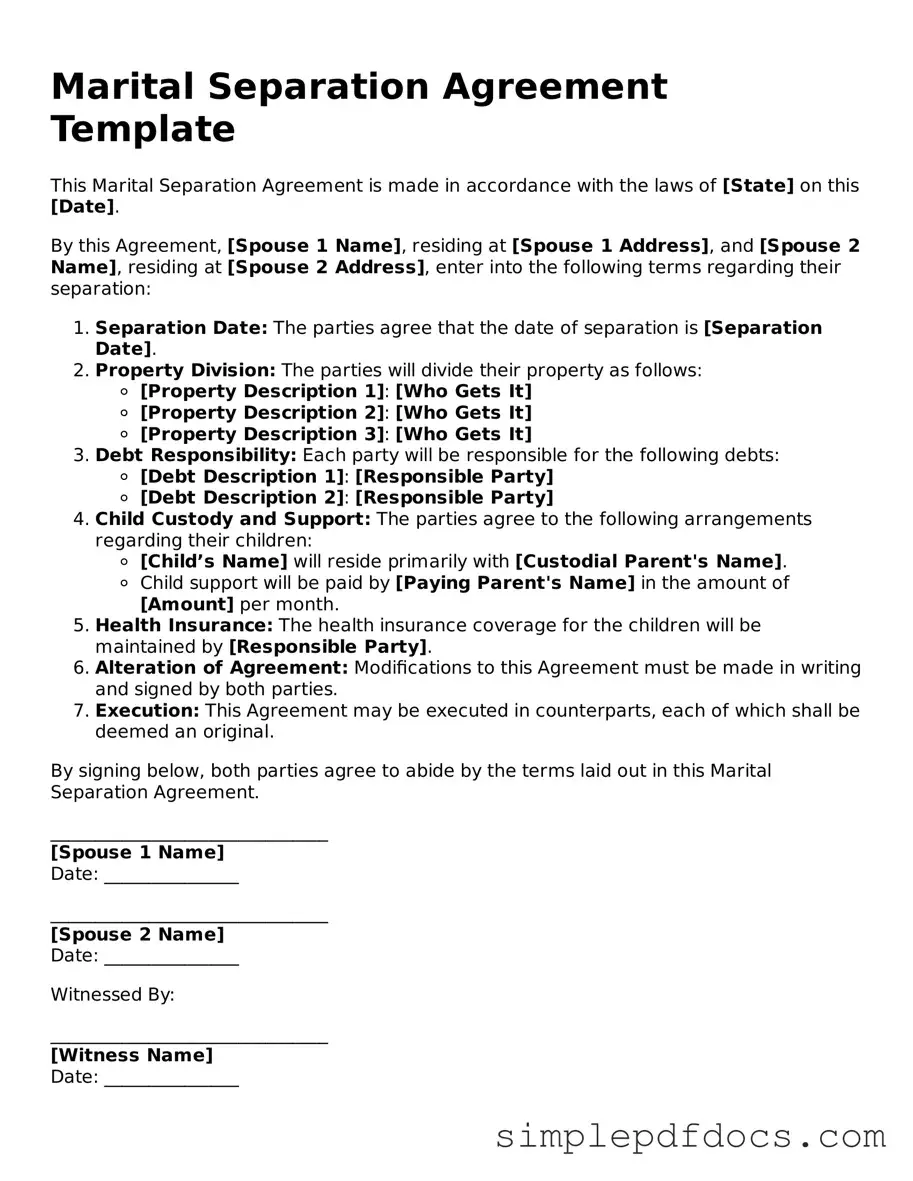The Marital Separation Agreement form serves as a crucial document for couples who choose to live apart while still legally married. This form outlines the rights and responsibilities of each spouse during the separation period. Key aspects typically included are the division of property and debts, child custody arrangements, and spousal support provisions. By addressing these matters in a clear and structured manner, the agreement helps to minimize potential conflicts and misunderstandings. Additionally, the form may specify how shared assets will be managed and how financial obligations will be handled. Importantly, it is designed to protect the interests of both parties, ensuring that each spouse understands their obligations and entitlements. The clarity provided by such an agreement can facilitate a smoother transition into separate lives, while also laying the groundwork for future negotiations should divorce become necessary. Overall, the Marital Separation Agreement is an essential tool for couples navigating the complexities of separation, offering a framework to address critical issues amicably.
